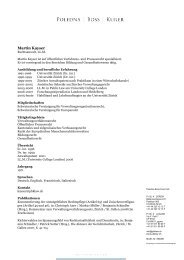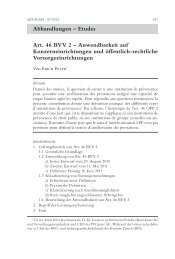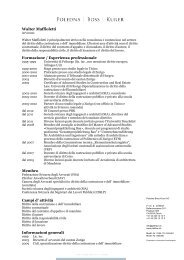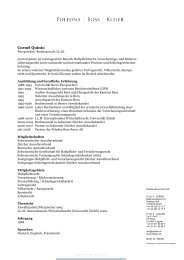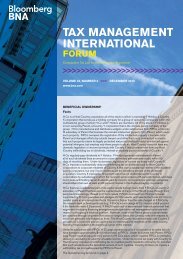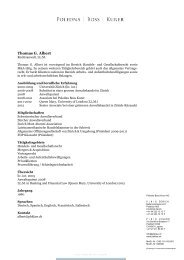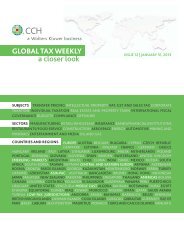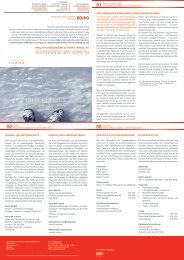Tizhong cautioned that while identifying andquantifying potential cost savings ( e.g., lower labor,capital, technology) generated by LSAs is relativelystraightforward, it is more difficult to quantifythe "market premium" ( i.e ., qualities such asmarket size and government incentives that couldmake a particular location more profitable) thatcertain LSAs may generate. Tizhong recommendedeconomic modeling as a first step, with econometricanalysis and game theory as other potentialavenues to explore when attempting to determinea market premium generated by LSAs.In addition to the challenges and importance ofrecognizing and measuring LSAs, Tizhong also addressedseveral other transfer pricing matters thatare at the forefront of the SAT's focus:Lack of Comparables – As with most developingcountries, China has a limited number of publiccompanies. This is due to a manufacturing-basedeconomy, a decreasing number of third-partyarm's length transactions, the level of integrationof a Chinese operation into the multinationalparent company, and other factors. The SAT addressesthe lack of comparables by making transferpricing adjustments to foreign comparables thattake into account differences in geographic factorswhen using the transactional net margin method.Alternatively, the use of the CUP and profit-splitmethods can alleviate this issue; unfortunately,these methods are not always available.Transfer Pricing Examinations – In China, transferpricing cases are subjected to three levels ofpanel reviews: (i) city (prefecture) level, (ii) provinciallevel, and (iii) the SAT. The city reviewaddresses whether the case should be selectedfor additional review or closed. The provinciallevel then conducts the second level of review,and the SAT conducts the final review and hasthe ability to overturn decisions made by lowerlevelexpert panels (however, this is rare). Thethree-level review is designed to promote fairnessto both the taxpayer and the tax authority,something that is not always possible to achievethrough the courts as they rely upon the SATfor guidance in transfer pricing matters.Transfer Pricing Audit Targets – China currentlyfocuses on MNEs that fit any of the followingfact patterns: (i) frequent related party transactions,(ii) abnormal losses or gains, (iii) regularlosses that are not corrected by the business, (iv)failure to report sufficient documentation, or (v)adoption of "unreasonable" pricing policies.It is evident from Mr. Tizhong's comments thatthe SAT will continue to focus on transfer pricingmatters and is busily filling in the gaps interms of its approach to common issues such ascomparables, adjustments, and audit practices.MNEs located or operating in China should bevigilant in setting up and documenting their operationsin a way that minimizes exposure. Inaddition, whether operating in China or otherdeveloping countries, MNEs should evaluatethe existence of potential LSAs that could impactintercompany pricing.30
OECD Section E – Redraft On Safe HarborsRevised Section E On Safe Harbors InChapter IV Of The Transfer PricingGuidelines For Multinational EnterprisesAnd Tax Administrationsby Matthew Vold (Chicago)Revised Section E on Safe Harbors in Chapter IVof the Transfer Pricing Guidelines for MultinationalEnterprises and Tax Administrations, approved bythe OECD Council on May 16, 2013, encourages,under the right circumstances, the use of bilateralor multilateral safe harbors. The discussion considersthe benefits of, and concerns regarding, safeharbor provisions and provides guidance regardingthe circumstances in which safe harbors may be appliedin a transfer pricing system based on the arm'slength principle.Key areas of discussion include:Benefits of safe harbors – Safe harbors providebenefits to taxpayers through simplified complianceand reduced compliance costs and certaintythat the price charged or paid on the coveredcontrolled transaction will be accepted by the taxadministrations. They also permit tax administrationsto focus administrative resources fromsmaller taxpayers and less complex transactionsto more complex, higher-risk cases.Concerns over safe harbors – Adverse consequencesof safe harbors may include reporting oftaxable income that is not in accordance with thearm's length principle, the risk of double taxationor double non-taxation when adopted unilaterally,the potential for inappropriate tax planning,and issues of equity and uniformity.Recommendations on the use of safe harbors– The OECD developed guidance encourages,under the right circumstances, the use of bilateralor multilateral safe harbors, but notes thatwhether adopted on a unilateral or bilateral basis,safe harbors do not bind or limit in any way anytax administration other than the tax administrationthat has expressly adopted the safe harbor.The OECD's recommendations on the use of safeharbors include the following:Unilateral safe harbors may lead to thepotential for double taxation or double nontaxation,among other issues. For example,when a taxpayer reports income above thearm's length level due to the safe harbor,more income will be reported by the domesticaffiliate and less taxable income will bereported in the foreign tax jurisdiction of thecounterparty to the transaction. In the eventthe other tax administration challenges theprice of the transaction, the taxpayer may facedouble taxation. On the other hand, doublenon-taxation could occur when the taxpayerelects application of a unilateral safe harborbelow the arm's length level in the countryadopting the safe harbor. In such a case, therewould be no assurance that the taxpayer wouldreport income above the arm's length level inother countries on a consistent basis, and it isunlikely other administrations could requirethe income to be reported above arm's length31
- Page 1 and 2: GLOBAL TAX WEEKLYa closer lookISSUE
- Page 3 and 4: GLOBAL TAX WEEKLYa closer lookISSUE
- Page 5 and 6: FEATURED ARTICLESISSUE 30 | JUNE 6,
- Page 7 and 8: taxation treaties concluded by Swit
- Page 9 and 10: FEATURED ARTICLESISSUE 30 | JUNE 6,
- Page 11 and 12: FEATURED ARTICLESISSUE 30 | JUNE 6,
- Page 13 and 14: UK, its offshore dependencies, and
- Page 15 and 16: financing and all forms of financia
- Page 17 and 18: Th e Government pointed out in part
- Page 19 and 20: Talks are now underway. The TIEA wi
- Page 21 and 22: through which they can clamber in o
- Page 23 and 24: fi nally, and most egregiously, the
- Page 25 and 26: office space, or own tangible asset
- Page 27 and 28: extended for 2 years in December 20
- Page 29: Financial transactions ( e.g. inter
- Page 33 and 34: suggests that the following items m
- Page 35 and 36: FEATURED ARTICLESISSUE 30 | JUNE 6,
- Page 37 and 38: State Interest And IntangibleExpens
- Page 39 and 40: States generally define "intangible
- Page 41 and 42: Code Sec. 1563(controlledgroup)Stat
- Page 43 and 44: ConnecticutGeorgiaIllinoisIndianaRe
- Page 45 and 46: Rhode IslandTennesseeVirginiaWest V
- Page 47 and 48: Table 4. Comprehensive Income Tax T
- Page 49 and 50: include federal interest income, st
- Page 51 and 52: Recurring IssuesRestructuring of th
- Page 53 and 54: M&A. Nick has extensive experience
- Page 55 and 56: and consumers." As Germany and Chin
- Page 57 and 58: on many levels. The panel found tha
- Page 59 and 60: equirements placed on the states, i
- Page 61 and 62: NEWS ROUND-UP: COUNTRY FOCUS - ITAL
- Page 63 and 64: NEWS ROUND-UP: REAL ESTATE AND PROP
- Page 65 and 66: ates - such that, in 2014, the 4 pe
- Page 67 and 68: NEWS ROUND-UP: FTTISSUE 30 | JUNE 6
- Page 69 and 70: NEWS ROUND-UP: ENVIRONMENTAL TAXESI
- Page 71 and 72: Finally, the Federal Council veheme
- Page 73 and 74: Singapore Plugs Benefits For SMEsOf
- Page 75 and 76: TAX TREATY ROUND-UPISSUE 30 | JUNE
- Page 77 and 78: CONFERENCE CALENDARISSUE 30 | JUNE
- Page 79 and 80: Key speakers: John Capasso (Alvarez
- Page 81 and 82:
Key speakers: TBA6/27/2013 - 6/27/2
- Page 83 and 84:
6/14/2013 - 6/14/2013http://www.con
- Page 85 and 86:
THE CYPRUS BAIL-OUT ANDFOREIGN CLIE
- Page 87 and 88:
Chair: Jonathan Levy (Partner, Reyn
- Page 89 and 90:
IN THE COURTSISSUE 30 | JUNE 6, 201
- Page 91 and 92:
on including the profit from the do
- Page 93 and 94:
deduct VAT as a result of incomplet
- Page 95 and 96:
where the taxpayer had somehow offs
- Page 97 and 98:
een paid in the destination State.
- Page 99 and 100:
that Spain has gone its own way fir





